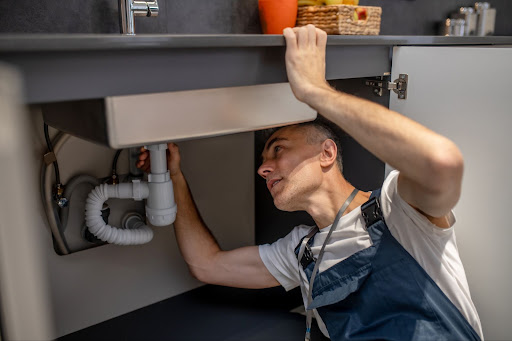A well-functioning kitchen is essential for any home, and a crucial aspect of its functionality lies in the plumbing system. The plumbing in a kitchen goes far beyond just the sink and involves various components that ensure the proper functioning of water supply, drainage, and gas connections. In this blog post, we will explore the essential plumbing requirements in a kitchen, highlighting the key components and their significance.
Water Supply
One of the primary plumbing requirements in a kitchen is a reliable water supply system. The water supply is responsible for providing clean water for cooking, washing dishes, and other kitchen tasks. The main components of the water supply system include:
a) Supply Lines: Supply lines are responsible for carrying fresh water from the main water line to the kitchen fixtures. These lines are typically made of copper, PEX, or PVC pipes, and they should be installed professionally to prevent leaks and ensure consistent water flow.
b) Faucets: Faucets are the most visible and frequently used plumbing fixtures in a kitchen. They are connected to the supply lines and control the flow of water. Modern kitchen faucets often come with features like pull-out sprayers and touchless operation, adding convenience and efficiency to the kitchen.
c) Hot Water Supply: Many kitchen tasks require hot water, such as washing dishes and preparing hot beverages. To meet this need, a kitchen should have a hot water supply line connected to a water heater. The water heater can be either tankless or traditional, depending on the kitchen’s requirements and available space.
Sink and Drainage System
The kitchen sink and its associated drainage system are vital plumbing components that facilitate dishwashing, food preparation, and waste disposal. The key elements of the sink and drainage system include:
a) Sink: The sink itself is where most of the water-related activities in the kitchen occur. It should be installed securely, with proper sealing to prevent leaks. Sink materials like stainless steel cast iron, and composite is commonly used due to their durability and ease of maintenance.
b) Drain: The sink’s drain carries wastewater and food particles away from the kitchen. It is connected to the main drainage system of the house. To prevent clogs and ensure proper drainage, a sink should have a P-trap—a curved pipe that traps debris and prevents sewer gasses from entering the kitchen.
c) Garbage Disposal: A garbage disposal unit is often installed under the sink. It helps break down food waste into smaller particles, allowing it to pass through the drain more easily. Proper usage and regular maintenance of the garbage disposal can prevent clogs and unpleasant odors.
Gas Supply
In addition to water supply, kitchens often require a gas supply for cooking. Gas-powered stoves and ovens are popular choices for many households. The gas supply system comprises the following elements:
a) Gas Lines: Gas lines deliver natural gas or propane from the main gas supply to the kitchen appliances. These lines should be installed by professionals and comply with safety regulations to prevent gas leaks.
b) Shut-off Valve: A shut-off valve is a crucial safety feature that allows you to turn off the gas supply to the kitchen in case of emergencies, such as gas leaks or appliance malfunctions.
c) Gas Appliances: Gas-powered stoves and ovens are commonly used in kitchens. It is important to choose appliances that are compatible with the gas supply system and ensure they are installed correctly for optimal performance and safety.
Well-Planned Plumbing Systems
A functional and efficient kitchen requires well-planned plumbing systems. From water supply lines and faucets to sinks, drainage systems, and gas connections, each component plays a vital role in the overall functionality of the kitchen.
By understanding these plumbing requirements, homeowners can make informed decisions, ensure proper installations, and maintain their kitchen’s plumbing systems effectively. Remember, professional assistance from Tap 2 Drain Plumbing is always recommended for complex plumbing tasks to ensure safety and reliable performance in the long run.

